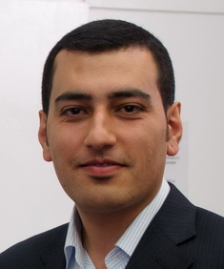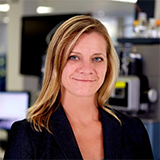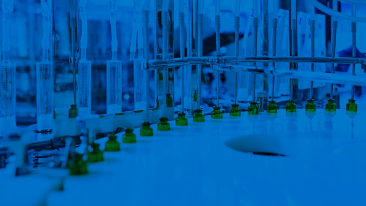Product and process development, optimization, and technology transfer by utilizing modeling and simulation tools are growing in popularity in the pharma and biopharma industries. I recently had the pleasure of discussing these dynamics with one of its greatest proponents.
Nima is the Founder and Principal of Procegence, a consultancy providing on-demand modeling and simulation, implementation services and training on the use of modeling and simulation (M&S) for process development and scale-up, as well as supporting clients in their readiness and preparation of regulatory submissions. The Procegence team’s mission is to empower clients to harness the power of modeling and simulation to accelerate time to market, reduce process development costs and enhance product quality and yield.
Kelly Doering: Hi Nima, thanks so much for taking the time to speak with me. Tell me, how did you get into this exciting space?
Nima Yazdanpanah: Hi Kelly, it’s great to be here – thank you for the opportunity. I started in the petrochemical industry over 20 years ago, but I expanded my experience in a number of industries, including the fine chemicals, food and pharmaceutical sectors. I had hands-on exposure to a wide range of tools enabling process optimization. I spent 4 years at the FDA’s Emerging Technologies  Program, which allowed me to extend this cross-industry expertise to pharma. Many of the lessons I learned in the fine chemical were applicable to pharma, which might surprise some people.
Program, which allowed me to extend this cross-industry expertise to pharma. Many of the lessons I learned in the fine chemical were applicable to pharma, which might surprise some people.
I struck out on my own and founded Procegence in 2020, unfortunately just 2 weeks before the pandemic lockdown. Despite many of the obvious challenges of starting a business at that time, I stuck with it and have been delivering on the Procegence vision since. Our clients get enormous value from our services by using M&S in bringing a product to market faster, better and cheaper. This has enabled us to organically grow during a challenging time.
KD: The AspenTech team recently presented a webinar with ISPE entitled, “Advance Biopharma Tech Transfer Using Process Modeling and Simulation.” Given your expertise in the field of M&S, what were the takeaways you feel were important for our audience?
NY: The team showed a lot of capabilities in M&S, which was great, as it reinforced the applicability of these tools from R&D to process development and characterization. The discussion covered how modeling can be used across the different stages of the biopharma product lifecycle and to accelerate the activities by digital transformation.
One example is from the ROI by one of our clients. We helped them to reduce the process development, tech-transfer, regulatory submission and approval time by 9 months. For a high-value product that is covered by patents, having a product earlier to the market could mean a million dollars revenue gained per day--multiply that savings by 9 months! The investors and management were very happy, but I am extremely happy for the patients who get access to a life-saving medicine 9 months sooner.
KD: What about for someone brand new to the use of these tools in pharma?
NY: It should get them thinking about what problems they are currently trying to solve, starting with the questions they are trying to answer. Think of the processes that are taking a long time through extensive experimentation. How can I make them shorter? How can I save time without doing everything manually? Be open to the possibilities. Also, start from developing the knowledge around the fundamentals of the chemistry and chemical engineering, then empirically understand the ins and outs of the models, involved physics, simulation setup, numerical methods and so on.
KD: My colleague, Geeta Pherwani, and I presented a similar talk at the Biotalk conference in Boston, MA the week of May 15th, and we saw a real interest in M&S in upstream and downstream process development in bioprocessing. We polled the audience on a few questions, and the majority cited scale-up as being the most challenging activity in their cell culture processes. How does that resonate with you?
NY: Absolutely, as there are many scale-dependent phenomena, especially related to kinetics, with several variables to consider. M&S can be used for assessing different conditions, flowsheet modeling and sensitivity analysis across selected CPPs (critical process parameters). It can significantly accelerate process optimization during scale-up and save the team a tremendous amount of time. Biopharma products are very expensive and the processes (such as fermentation) are very lengthy so running an experimental trial-and-error (i.e. design of experiment or DoE) at manufacturing scale becomes impossible. However, the M&S tools can evaluate a wide range of materials, equipment size and design, process conditions in a short time with no material required. An analogy could be in the aerospace industry, where they perform a wide range of M&S during the design stage and virtual testing before they make an airplane or spaceship.
KD: Despite the value the industry sees in M&S, something seems to be holding it back. Why is that?
NY: Culture is number one, but connected to that is lack of familiarity, training, expertise and resources. It’s just a different workflow for many of the teams that would benefit from its adoption so our role is to reinforce the ROI that can be attained. The premise is following a quality by design (QbD) approach, and this is fully supported by the FDA and ICH (International Council on Harmonization) who advocate for enhanced product and process understanding. It does require some investment, but a team like ours can help reduce these barriers.
KD: How do you see different modalities impacting these perceptions?
NY: For molecules that are relatively easy to make, traditional experimentation might be fine but, as the complexity grows, M&S really provides significant ROI. For generic medicines, where production costs are a significant consideration, process optimization can yield a higher proportion of savings compared to an innovator, where margins are largely driven by drug discovery. However, the challenges (and potential for savings) in scale-up and from lab-to-market are the same for both simple and complex molecules. I also think about dangerous chemical processes (such as nitration) or highly-potent active pharmaceutical ingredients (HPAPI) or controlled substances (e.g. Adderall, where the compounds are DEA class II amphetamine salts), the “virtual experiments” and M&S for scale-up and optimization are game-changers primarily because they reduce the cost, danger and regulatory licenses required overall making things easier.
KD: As you said, the FDA is vocal about its advocacy of M&S, and this is aligned with ICH guidelines about the benefits of demonstrating enhanced process understanding in regulatory filings. Does the industry believe this? Do they have the tangible evidence they need?
NY: Many in the industry still don’t believe that the regulatory agencies are on their side, and they may even cite regulations as a barrier to adopting new technologies like M&S. I used Aspen Plus® and other M&S tools when I was at the FDA to develop models and to show the impact on process development timelines. At the FDA, I published papers and presented cases at industry conferences and showed them that regulatory agencies understand the M&S benefits, know how to treat them, and how they are supporting the entire community to modernize their approach.
We conducted M&S working groups, developed internal knowledge and protocols and got ready for the industry to bring on their model-based developed process, risk analysis, design space and control strategies. Now, I’m sitting the other side of the table and I help pharma and biopharma clients with developing such models as well as compiling modeling data for their CMC submissions. So, there are definitely those that believe and are investing.
KD: Give us your perspective on the future of M&S in pharma and biopharma?
NY: I am very optimistic for the industry. These teams are heavily influenced by their peers, and as they continue to see M&S adoption, they will begin to ask themselves why they aren’t doing it. I’m seeing advocates from the younger generation as well, and they are building business cases for their management teams. There is no one-size-fits-all tool, however, and people do have to educate themselves and use their best judgement. AI has a role too, but it is not the silver bullet either.
This is where AspenTech and Procegence can help teams learn about mechanistic and hybrid modeling to see what will be most useful in different scenarios. That knowledge builds confidence, which increases adoption. When companies can witness, first-hand, the time and cost savings there will be no going back.
Thanks again to Dr. Nima Yazdanpanah from Procegence for sharing his insights. We invite you to watch the on-demand webinar, Advance Biopharma Tech Transfer Using Process Modeling and Simulation, to learn more.
.png?h=250&w=975&la=en&hash=C734A741F4F956C4EB4CA955F99FE702)


.png?h=415&w=675&la=en&hash=B673B26025DDCA050642E8096E6D2935)

Leave A Comment